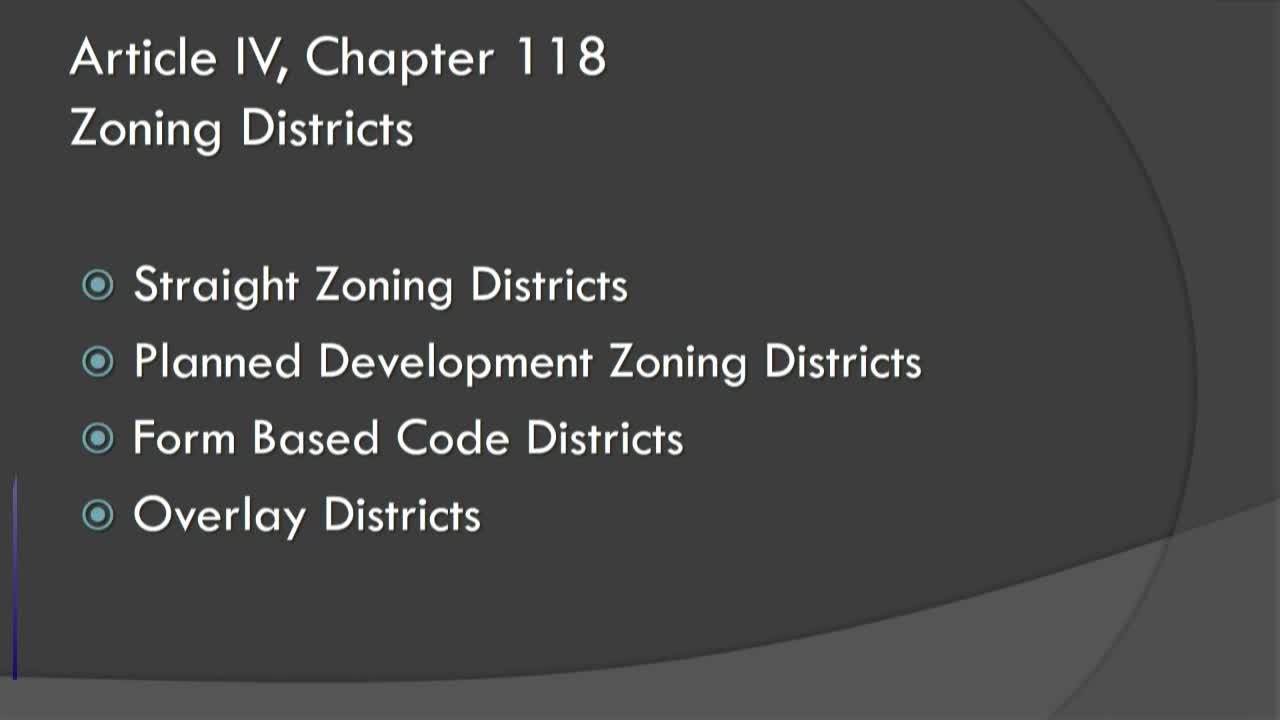Zoning Changes Spark Debate Over Development Standards
August 15, 2024 | North Richland Hills City, Tarrant County, Texas
This article was created by AI summarizing key points discussed. AI makes mistakes, so for full details and context, please refer to the video of the full meeting. Please report any errors so we can fix them. Report an error »

In a recent government meeting, officials discussed the intricacies of zoning regulations in North Richland Hills, focusing on the distinctions between various zoning districts. The primary emphasis was on straight zoning districts, which are characterized by their single-use designation—allowing only one type of use, such as residential, commercial, or industrial. Unlike cumulative zoning districts found in some other communities, North Richland Hills maintains a straightforward approach where each zoning district has a fixed set of standards, making it easier for property owners and developers to understand what is permissible without needing additional approvals from city councils or planning commissions.
The meeting highlighted that straight zoning districts are unconditionally approved, meaning no conditions can be attached to their approval. This clarity is beneficial for both the city staff and property owners, as it streamlines the development process. However, if a property owner seeks a variance, they must go through a separate process with the zoning board of adjustment.
The discussion also touched on the predominance of residential zoning in North Richland Hills, with approximately 75% of the area designated for residential use. The officials noted that the R2 zoning district is the most common, representing standard suburban-style subdivisions.
Additionally, the meeting addressed the agricultural zoning district, which serves as a placeholder for land intended for future development. It was emphasized that once property is rezoned from agricultural to another designation, it cannot revert back to agricultural zoning.
The officials also outlined the various overlay districts, including those for floodplain management and minimum dwelling unit sizes, as well as the planned development zoning districts that allow for flexibility in development standards in exchange for enhancements to the project.
The meeting concluded with a zoning change request from agricultural to residential estate zoning for a specific property, reflecting ongoing efforts to adapt zoning regulations to meet community needs. This request is part of a broader trend of zoning changes aimed at facilitating residential development in the area.
The meeting highlighted that straight zoning districts are unconditionally approved, meaning no conditions can be attached to their approval. This clarity is beneficial for both the city staff and property owners, as it streamlines the development process. However, if a property owner seeks a variance, they must go through a separate process with the zoning board of adjustment.
The discussion also touched on the predominance of residential zoning in North Richland Hills, with approximately 75% of the area designated for residential use. The officials noted that the R2 zoning district is the most common, representing standard suburban-style subdivisions.
Additionally, the meeting addressed the agricultural zoning district, which serves as a placeholder for land intended for future development. It was emphasized that once property is rezoned from agricultural to another designation, it cannot revert back to agricultural zoning.
The officials also outlined the various overlay districts, including those for floodplain management and minimum dwelling unit sizes, as well as the planned development zoning districts that allow for flexibility in development standards in exchange for enhancements to the project.
The meeting concluded with a zoning change request from agricultural to residential estate zoning for a specific property, reflecting ongoing efforts to adapt zoning regulations to meet community needs. This request is part of a broader trend of zoning changes aimed at facilitating residential development in the area.
View full meeting
This article is based on a recent meeting—watch the full video and explore the complete transcript for deeper insights into the discussion.
View full meeting
